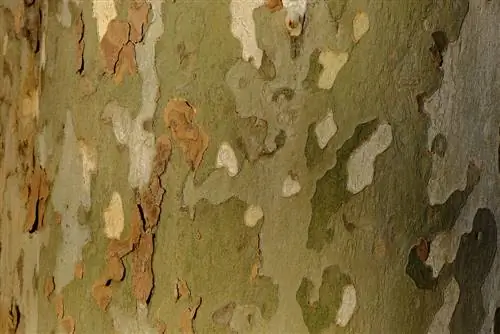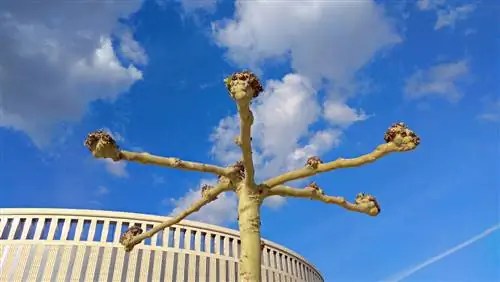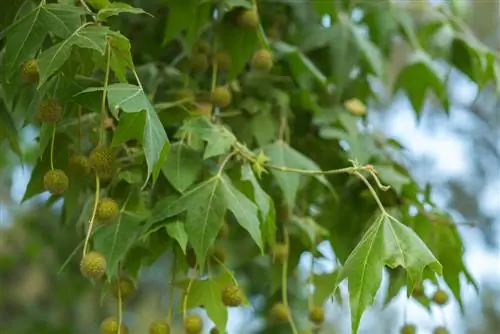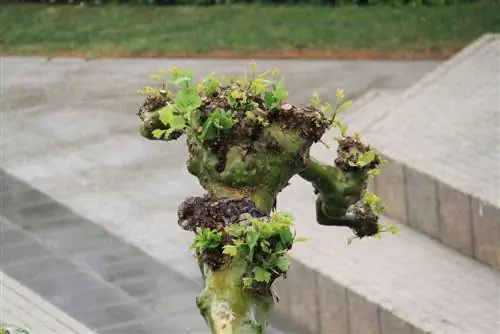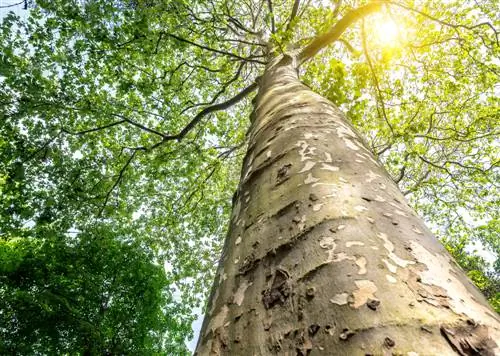- Author admin [email protected].
- Public 2023-12-16 16:46.
- Last modified 2025-01-23 11:22.
While the trunk of many tree species becomes covered with thick, furrowed bark as it ages, we will look in vain for this in the plane tree. It regularly loses parts of its bark, but its trunk remains smooth. What's behind it?
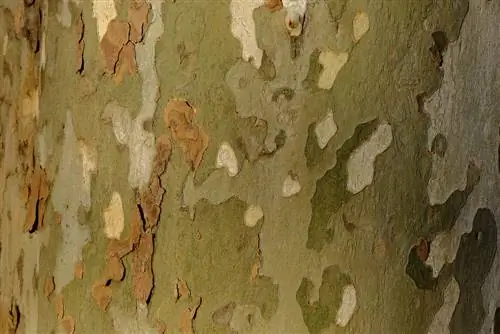
Why does a plane tree lose its bark?
Plane trees regularly lose parts of their bark, which is normal and he althy. They have a special bark that sheds more heavily every 3 to 4 years. The shedding of the bark depends on growth and environmental conditions. Watch for additional symptoms that suggest illness.
Visible changes to the trunk and branches
As a plane tree ages, the following changes can be observed:
- the bark bursts
- partly with loud noises
- Trunk and branches are affected
- bitually pieces of bark peel off and fall to the ground
- a mottled fabric becomes visible underneath
This appearance appears morbid to a layperson, although at the same time the tree looks very vital. Therefore, the desire for a coherent explanation is understandable.
Plane tree has a “special” bark
When people talk about the bark that visibly covers the trunk and branches of a tree from the outside, they usually mean the bark. This is bark that has died and migrates outwards. This layer still has its function because it protects the tree from external influences. Over the years it becomes thicker, furrowed and darker.
The plane tree does not develop such bark, no matter what species it belongs to. It only keeps its old bark on the trunk for a comparatively short time and then sheds it.
Shedding the bark
The shedding of the bark follows a temporal rhythm. The plane tree may lose some bark annually, but more severe “molting” can be observed about every 3 to 4 years. The growth of the plane tree plays another role. Because the more your trunk increases in size, the sooner the tightening corset of bark will burst open.
Since the trunk circumference of older trees increases more slowly, bark shedding is more likely to be observed in the crown area, where the strongest growth still takes place.
Loss of bark in summer
Due to the increased water absorption in summer, the trunk is narrower during the day and expands at night. The bark bursts open. This is a natural mechanism.
If it is preceded by a rainy, warm spring, which helps the plane trees to grow well, this leads to an even greater loss of bark. In these summers, the changes to the trunk are even more noticeable to the attentive observer.
Tip
The peeling of the bark is not an indication of dryness, as some owners suspect. Pay attention to droopier leaves, which indicate a lack of water.
Disease-related bark loss
A plane tree that loses bark may also be suffering from a fungal attack. Watch your plane tree in the garden for other symptoms that indicate Massaria disease. For example, a pink to reddish discoloration of the bark.

